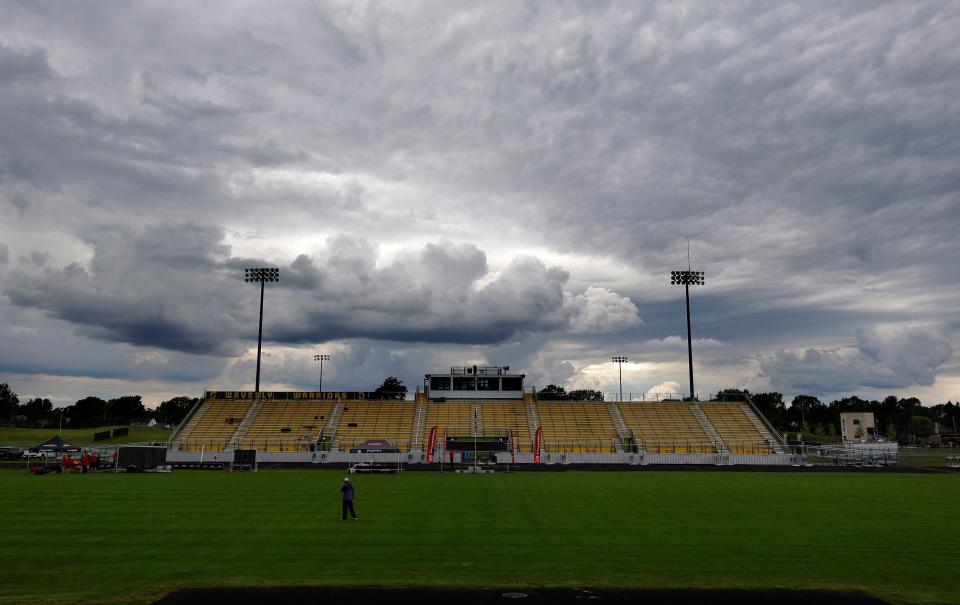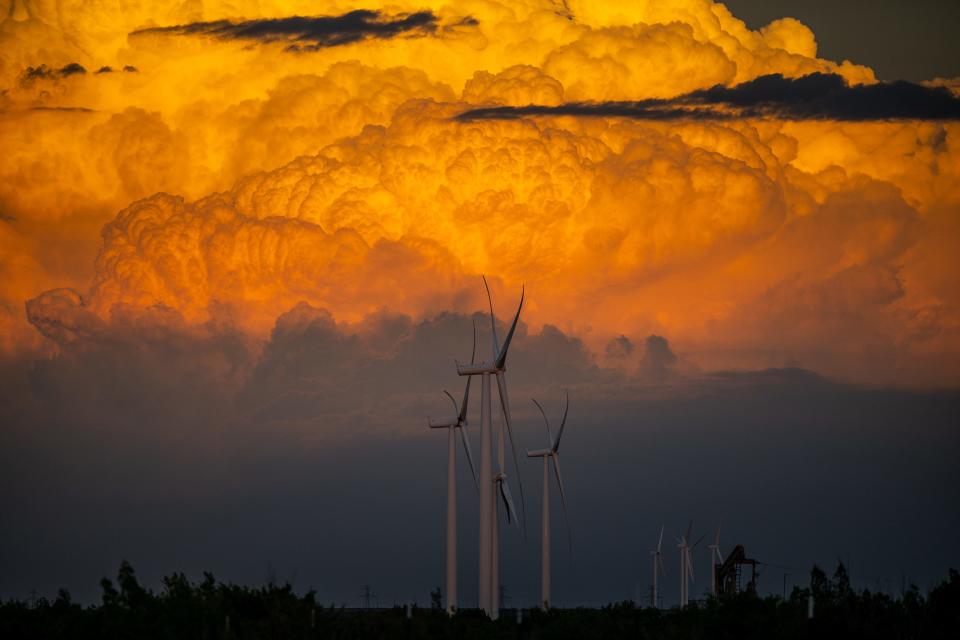In the summer months, the skies can fill up with a variety of interesting and unusual cloud formations, especially during stormy weather.
Here’s a list of what to look for and what different clouds might mean for the weather:
What different clouds mean
Clouds are more than just picturesque features of the sky; they are critical indicators of the weather to come.
Understanding the various types of clouds can provide insights into current conditions and help forecast impending weather changes.
From towering cumulonimbus clouds that signal severe thunderstorms to the eerie, pouch-like mammatus clouds often associated with turbulent weather, each cloud formation carries unique information.
Cumulonimbus clouds

-
Towering, dense clouds with a flat, anvil-shaped top.
-
Develops from cumulus clouds and can reach great heights, often associated with thunderstorms.
-
Indicates severe weather, such as thunderstorms, heavy rain, hail, and sometimes tornadoes.
Mammatus clouds

-
Pouch-like protrusions hanging underneath the base of a cloud.
-
Usually form under cumulonimbus clouds due to sinking air pockets.
-
Often a sign of severe thunderstorms, but not always directly associated with dangerous weather.
Shelf clouds

-
A low, horizontal, wedge-shaped cloud, usually associated with a thunderstorm gust front.
-
Created by cold air from a thunderstorm downdraft spreading out and lifting warm, moist air.
-
Precedes thunderstorms and can indicate strong winds and severe weather.
Roll clouds

-
A long, tubular cloud that appears to roll about a horizontal axis.
-
Often forms along the leading edge of a storm front or gust front.
-
Indicates a change in wind direction and can precede severe weather.
Lenticular clouds

-
Lens-shaped clouds that usually form over mountain ranges, but can occasionally be seen in the region.
-
Created by air flowing over a barrier, like mountains, which creates standing waves.
-
Not typically associated with severe weather but are notable for their unusual, UFO-like appearance.
Virga clouds

-
Wisps of precipitation falling from a cloud but evaporating before reaching the ground.
-
Occur when precipitation falls through dry air.
-
Indicates that the air below the cloud is dry; can also signify the downdraft region of a storm.
Wall clouds

-
A localized, often abrupt lowering from the base of a thunderstorm.
-
Develops in the area of strongest updraft and sometimes rotates.
-
Can indicate the presence of a mesocyclone and potentially a tornado.
Scud clouds
-
Low, ragged clouds that appear beneath the main cloud base.
-
Formed from moist air lifted by outflow winds from a storm.
-
Often mistaken for tornadoes, but they are typically harmless, indicating gusty winds.
Each of these cloud types can provide valuable clues about the weather, especially during the dynamic and sometimes severe summer storm season.
This article originally appeared on Cherry Hill Courier-Post: Are those pretty clouds dangerous? What to know about summer skies
EMEA Tribune is not involved in this news article, it is taken from our partners and or from the News Agencies. Copyright and Credit go to the News Agencies, email news@emeatribune.com Follow our WhatsApp verified Channel





